A Journey to Eastern Hokkaido to Meet Rare Sea and Sky
Creatures!
Local Recommended Tours Also Featured!
Local Recommended Tours Also Featured!
Publication Date:2025.06.27
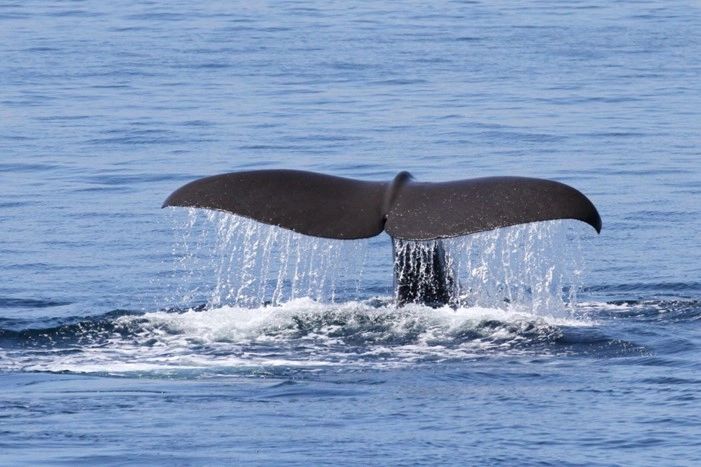
Contents
01
Overview of Eastern Hokkaido
Eastern Hokkaido is one of Japan’s premier destinations for
wildlife observation, offering vast untouched natural landscapes.
Its proximity to the Russian straits and the presence of cold
ocean currents bring an abundance of plankton, attracting a wide
variety of marine wildlife throughout the year. In particular, the
Shiretoko and Rausu area around the Nemuro Strait is a rare region
where visitors have the chance to encounter many different sea
creatures. Registered as a UNESCO World Natural Heritage Site,
this area is uniquely appealing because it offers opportunities to
spot wildlife not just on land, but also in the sea and sky. In
this article, we’ll introduce the fascinating marine animals you
can meet in Eastern Hokkaido, highlight the best times and places
for observation, and share local tips for making the most of your
wildlife adventure.
\Don’t miss your chance to encounter wild animals! For cruise
tickets, click here/
02
Whales

In the Shiretoko and Rausu area, large whales such as minke
whales and sperm whales migrate from warmer southern waters in
search of food from spring to summer. Minke whales grow to
around 8 to 10 meters in length, while sperm whales can reach an
impressive 18 meters. The best time for whale watching is from
April to August, with peak sightings of minke whales occurring
especially from June to July. Because whales are mammals, they
come to the surface regularly to breathe, releasing bursts of
mist known as “blows.” Seeing these powerful animals spouting
against the backdrop of the Shiretoko Peninsula is truly an
awe-inspiring sight! With some luck, you may also witness the
dramatic moment when a whale raises its tail. The chances of
encountering whales are particularly high off the coast of
Rausu, making whale watching cruises highly recommended. If you
hear the distinctive “whoosh!” of a blow in the distance, it’s a
clear sign that whales are nearby. For the best chance of
spotting them, keep your eyes on the diagonal area ahead of the
boat’s direction of travel.
03
Orcas
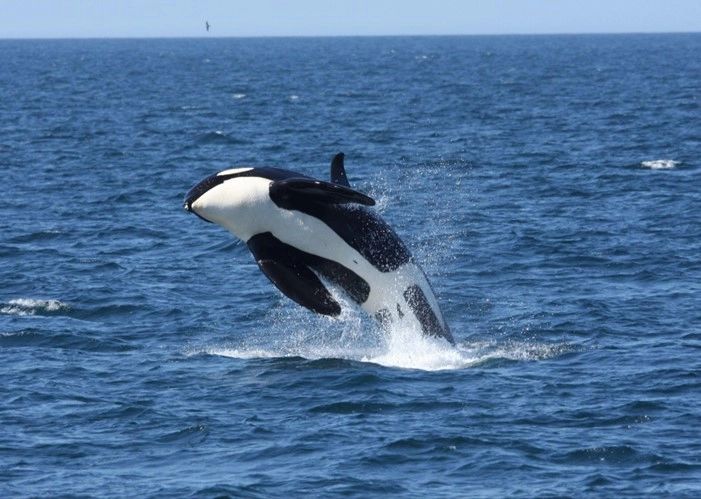
Orcas (killer whales) can also be observed in the Shiretoko and
Rausu area. Since orcas travel in family groups, you may spot
them swimming together, see dynamic jumps at the surface, or
even witness dramatic behaviors such as breaching (leaping out
of the water) or swimming alongside the boat. With a bit of
luck, you might even see spy-hopping (poking their heads above
the water) or tail-slapping displays. Orcas move quickly, so
spotting their distinctive black dorsal fins—especially the tall
fins of males—is key. The best season for observing orcas is
from April to June, with May being the peak month for sightings
in the Rausu area. What makes this spot truly special is that
you can often see them close to shore—it’s so famous as a photo
spot that orca enthusiasts visit from around the world during
peak season.
04
Sea Otters
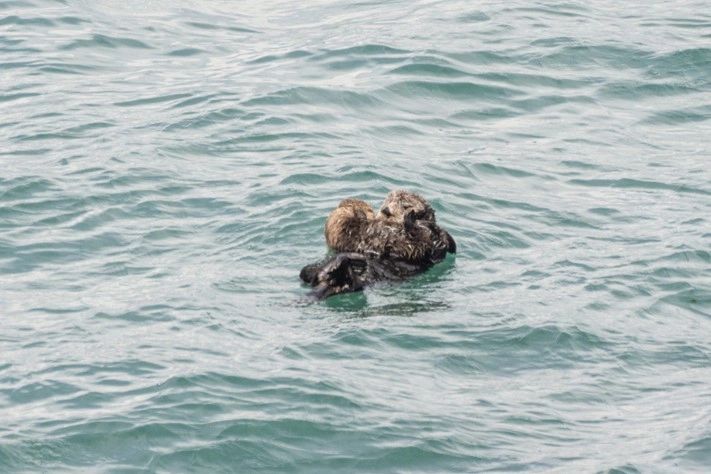
Sea otters are often thought of as adorable creatures that crack
open shellfish with stones, but in reality, they are a rare and
endangered species. Due to overhunting, their global population
once plunged to around 2,000, putting them on the endangered
species list. Sea otters are able to survive in cold waters
thanks to their incredibly dense fur—the thickest among
mammals—with over 100,000 hairs per square centimeter. In
Eastern Hokkaido, you can watch them feeding mainly on sea
urchins and shellfish. Recommended locations to observe sea
otters include the Shiretoko-Rausu area and Kiritappu Cape in
Hamanaka Town, which is about a two-hour drive from Kushiro
Airport. The best time for otter watching is from autumn to
winter, but with luck, you may even spot them in the early
morning during summer. At Kiritappu Cape, about three sea otters
have settled since around 2016, and in 2023, four mother-and-cub
pairs were confirmed in the area. You can often observe them
relatively close to shore! However, since they may be far away
to the naked eye, don’t forget to bring binoculars or a
telephoto lens for a better view. The best conditions are clear,
fog-free days with calm seas. Watch as sea otters crack open
shellfish on their bellies, float playfully on their backs, or
cuddle together as mothers and pups—truly heartwarming scenes.
Please remember that sea otters are sensitive to noise, so be
sure to observe them quietly without making loud sounds.
A special photo guide tour is also available—limited to one group per day! With the support of a professional photographer, you can beautifully capture the lovable scenes of wild sea otters. Even if you don’t have camera equipment, you can rent professional gear for an extra fee.
A special photo guide tour is also available—limited to one group per day! With the support of a professional photographer, you can beautifully capture the lovable scenes of wild sea otters. Even if you don’t have camera equipment, you can rent professional gear for an extra fee.
Capture Wild Otters on Camera! Kiritappu Cape Sea Otter
Photo Guide
05
Dolphins
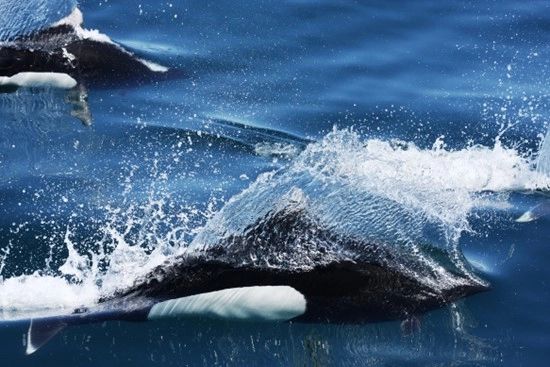
In Eastern Hokkaido, you can observe pods of dolphins such as
Pacific white-sided dolphins and Dall’s porpoises. These
intelligent creatures communicate with each other using clicks
and whistle-like sounds as they swim. Thanks to their speed and
agility, you might even witness “bow riding,” where dolphins
swim playfully along the waves created by boats. Watching them
jump or spin together in a group is an impressive sight!
Dolphins are curious and friendly, making close encounters more
likely than with many other wild animals. The best time for
dolphin watching is from late April to late October. Nature
cruises departing from Abashiri and Rausu offer high chances of
seeing dolphins in the wild. If you join a nature cruise, don’t
forget to dress warmly—even in midsummer, temperatures in the
Shiretoko and Rausu areas can drop below 20°C, and it feels
especially chilly out at sea. Wear comfortable, non-slip
sneakers, as the deck can be unsteady with strong swells. If
you’re prone to seasickness, it’s a good idea to take motion
sickness medicine beforehand, since the sea can be rough
depending on the weather and conditions.
06
Seals
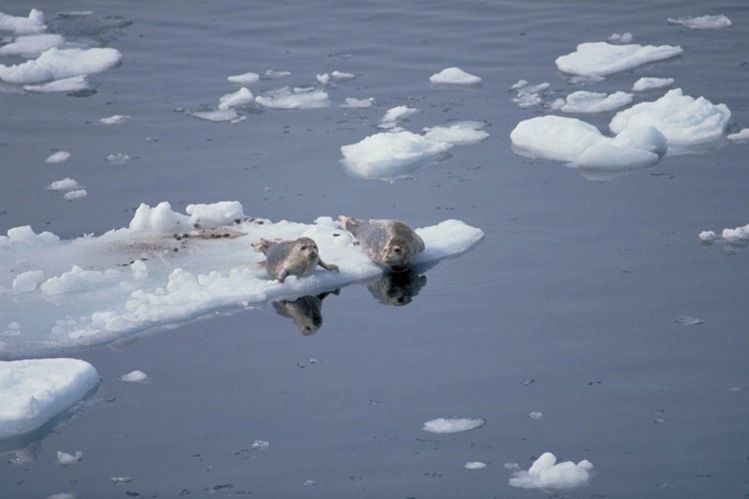
Seals, which arrive with the drift ice, are a quintessential
sight in Eastern Hokkaido’s winter. As the ice starts to melt in
early spring, seals can sometimes be spotted close to shore, and
can often be observed from boats as well. The most commonly seen
species is the spotted seal, known for its round, white face and
black spots. Seals rest and give birth on the ice, and by hiding
among the drift ice, they protect themselves from predators.
Mothers form strong bonds with their pups, nursing them closely
for the first few days after birth. Their innocent expressions
and the way they poke their heads above the water to look around
are sure to warm your heart. The best time for seal watching is
from March to early May during the drift ice season, but there
are some recommended places where you can see seals throughout
the year—here’s our top pick!
Recommended Spot: Monbetsu Seal Sea Paradise
Located within Kaiyo Park in Monbetsu City, Hokkaido, Monbetsu
Seal Sea Paradise is a specialist seal sanctuary and
protection facility. As of April 2025, you can meet three
spotted seals—Agu, Hiyori, and Kyoro—and observe their
adorable behaviors up close. The facility is also home to
rescued and elderly seals, serving as a “place of learning
about life” through lifelong care. Visitors can enjoy hands-on
experiences like feeding or signaling to the seals like a
trainer. With intelligence similar to that of dogs, the seals
will even raise a flipper in response to a wave—an
irresistible sight for all! Entry to the hands-on sessions is
limited to five people per time slot, so be sure to get a
numbered ticket, distributed 40 minutes before each session.
This spot is especially recommended for families with
children.
Access: 2 Kaiyo Park, Monbetsu City, Hokkaido (next to Okhotsk Tower)
Hours: 10:00–16:00 (subject to change by season)
Admission: Adults ¥500 / Children ¥300 / Preschoolers free
Official Site: https://o-tower.co.jp/seaparadise.html
Access: 2 Kaiyo Park, Monbetsu City, Hokkaido (next to Okhotsk Tower)
Hours: 10:00–16:00 (subject to change by season)
Admission: Adults ¥500 / Children ¥300 / Preschoolers free
Official Site: https://o-tower.co.jp/seaparadise.html
07
Steller’s Sea Eagles
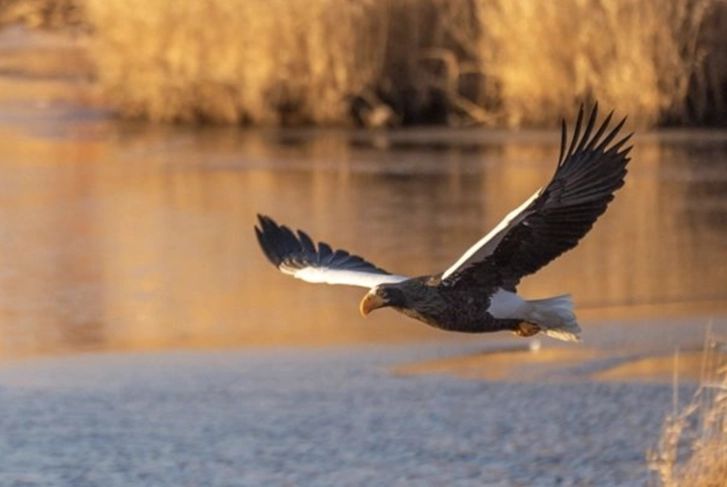
With a wingspan stretching up to 2 meters, the Steller’s sea
eagle is a magnificent raptor and an iconic symbol of Eastern
Hokkaido’s winter. Designated as an endangered species, it is
one of the largest birds of prey found in Japan. Their presence
is commanding, whether perched on drift ice floating on the sea
or resting atop a tree branch. Steller’s sea eagles are
instantly recognizable by their striking black and white plumage
and their robust yellow beak, truly embodying the title “King of
the Skies.” These eagles migrate from Russia mainly during the
winter, appearing along Eastern Hokkaido’s coast together with
the drift ice. They often feed on fish left by fishermen or
carcasses found on the ice, so you can sometimes see them even
in areas with human activity. The best time to spot Steller’s
sea eagles is from late October to early March, with the peak
coinciding with the arrival of the drift ice in February. Drift
ice cruises in Rausu and Nemuro are especially recommended for
high chances of encountering these majestic birds. You may
witness their powerful wings in flight or see them swoop down
from treetops to snatch fish. As spring approaches, the eagles
return to Russia, but if you’re lucky, you might still catch a
glimpse of lingering individuals on April cruises.
08
White-tailed Eagles
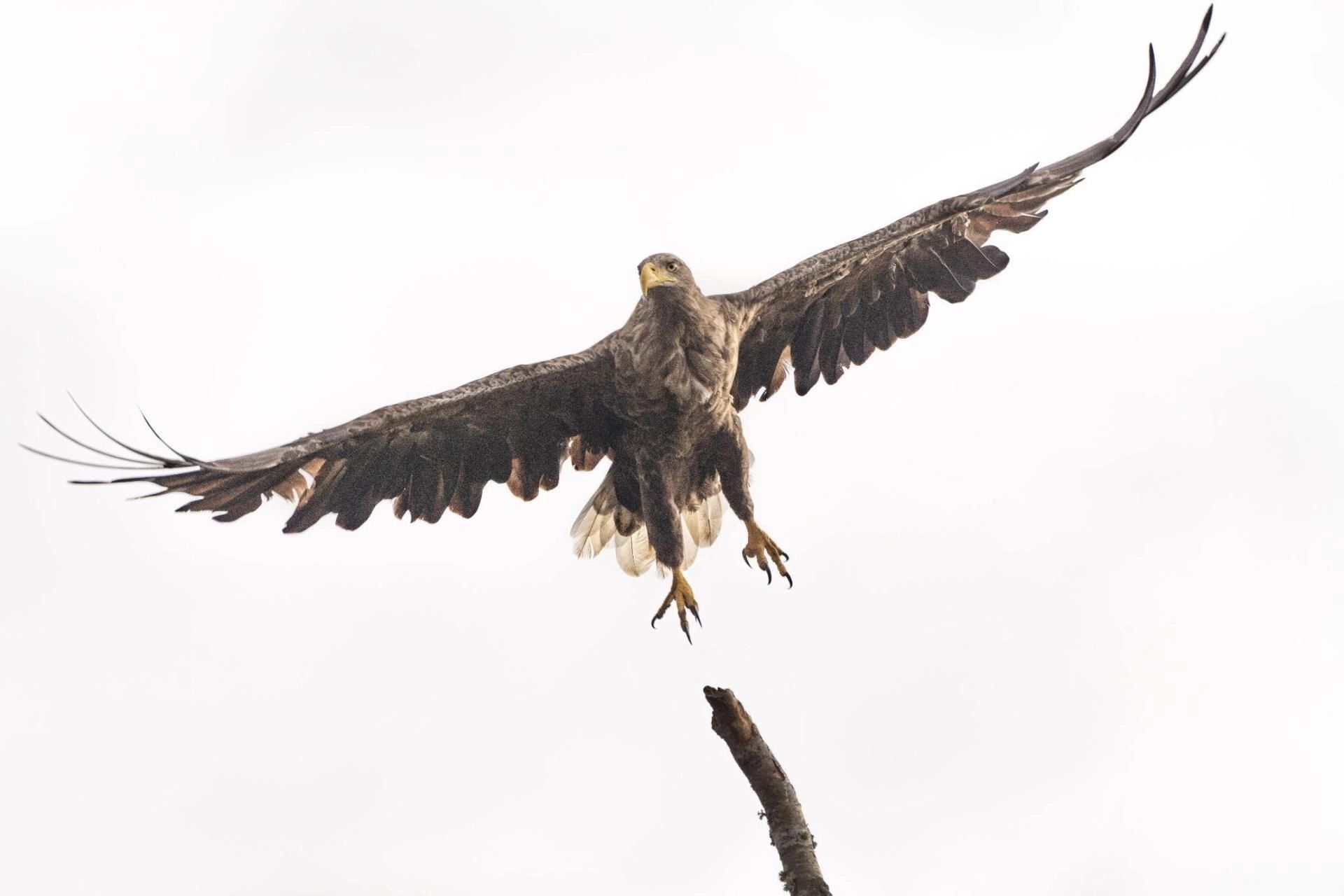
Slightly smaller but equally striking, the white-tailed eagle is
another raptor commonly seen during winter in Eastern Hokkaido.
With a sharp gaze and impressive wings, their overall plumage is
brown, and—as their name suggests—they feature distinctive white
tail feathers. These eagles can be observed gliding gracefully
through the sky or cruising low over open spaces. White-tailed
eagles migrate from Russia and other regions during winter and
are found along Hokkaido’s coasts, as well as near rivers and
lakes inland. They often move in pairs, and you might see them
calling to one another or cooperating while hunting. The optimal
viewing period is also from late October to early March.
Compared to Steller’s sea eagles, white-tailed eagles have a
broader range and tend to be spotted around coastal forests and
capes, so your chances of seeing them are slightly higher. We
recommend joining a nature cruise to see them in their natural
habitat. On these tours, you may spot them relaxing on cliffs or
treetops, or watch them scanning the sea for prey while flying
low in hunting mode.
09
Recommended Ways to Get Around
Because Eastern Hokkaido covers such a vast area, getting around
can be challenging. That’s why we recommend taking advantage of
sightseeing buses. In particular, the “Shiretoko Airport Liner,”
which offers direct service between Memanbetsu Airport and
Shiretoko (Utoro), and the “Shiretoko Roman Fureai-go,” a guided
tour bus that takes you to major attractions around Shiretoko
Utoro, are highly recommended. Reserve your tickets at the links
below!
Shiretoko Airport Liner
This is a limited-time direct bus service connecting
Memanbetsu Airport and Shiretoko (Utoro) via Abashiri City.
(Operates in summer: June–September, and winter: late
January–early March.)
Shiretoko Sightseeing Bus
These guided sightseeing buses depart from Shari Station or
Utoro Onsen and offer three different routes (A to C). You can
combine the courses to visit all of Shiretoko Utoro’s main
attractions in a single day.
10
Summary
Eastern Hokkaido is a true treasure trove of wildlife, unmatched
anywhere else in Japan. Encounters with marine animals here
promise experiences that can only be found in this unique region.
Each season offers a new and unforgettable way to observe these
remarkable creatures, creating memories that will last a lifetime.
Nature cruises are highly recommended for those hoping to spot
wildlife, as they provide excellent opportunities to see animals
up close in their natural habitat. There are also a variety of
special activities available to make your trip to Eastern Hokkaido
even more memorable. Don’t forget to bring binoculars, a telephoto
camera, and warm clothing when you set out on your adventure. What
amazing wildlife will you discover on your journey?
Writer Information

Naeka Okumura
Naeka Okumura, born in 1994, hails from Kitami City, Hokkaido. Worked for six years at a financial institution within Hokkaido. Later joined a video production company, Hokuei Northern Films, in Kitami City as a chief manager and writer. Resigned in 2023 and became independent as a copywriter and journalist writer under the name Produce One.
Naeka Okumura, born in 1994, hails from Kitami City, Hokkaido. Worked for six years at a financial institution within Hokkaido. Later joined a video production company, Hokuei Northern Films, in Kitami City as a chief manager and writer. Resigned in 2023 and became independent as a copywriter and journalist writer under the name Produce One.